How to Fertilize Cherry Blossoms: Essential Techniques for Stunning Trees
- February 26, 2024
- 0 comment
Discover essential techniques to fertilize cherry blossoms for stunning trees. Expert tips for vibrant blooms. In this guide, we delve into expert tips that ensure your cherry blossoms are not just surviving but thriving, showcasing vibrant blooms that become the envy of the neighborhood. Fertilizing cherry blossoms is an art as much as it is a science, and understanding the nuances can make all the difference. Whether you’re a seasoned gardener or a novice eager to see your first blossoms flourish, this article will provide you with all the knowledge you need to nurture your cherry trees into a breathtaking spectacle each spring.
List on How to Fertilize Cherry Blossoms
- Understanding Cherry Blossoms
- Selecting the Right Fertilizer
- The Right Time to Fertilize
- Step-by-Step Guides on How to Fertilize Cherry Blossoms
- Expert Insights
- Seasonal Care Calendar for Cherry Blossoms
- Integration of Sustainable Practices
- Watering Guidelines for Cherry Blossoms
- Advanced Techniques for Stunning Cherry Blossom Trees
- Plant to Plant and Row to Row Distance for Cherry Blossom Orchard
- Troubleshooting Common Problems
- Pest and Disease Management
- The Benefits of Biodiversity in Cherry Blossom Care
- Final Thoughts
- FAQs
Understanding Cherry Blossoms
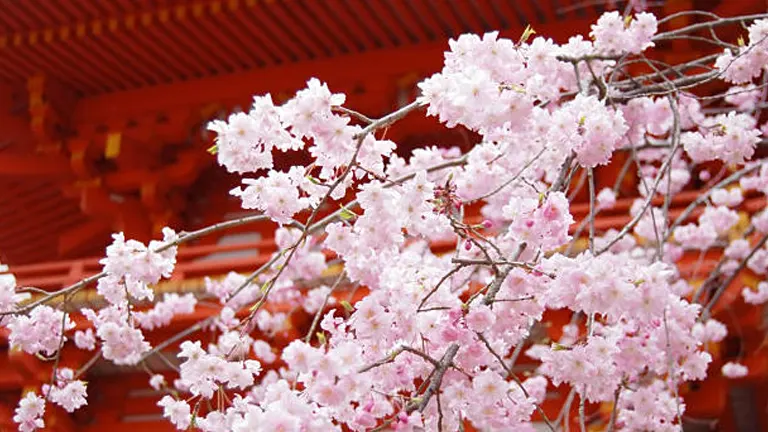
Cherry blossoms, or Sakura, hold a place of distinction in the world of flowering trees due to their profound beauty and cultural significance. These trees, belonging to the genus Prunus, display a wide range of varieties, each with unique characteristics that influence their care and blooming. From the serene Somei Yoshino to the exuberant Kanzan, understanding the specific needs of your cherry blossom variety is crucial.
The Botanical Perspective
Cherry blossoms thrive in a temperate climate, requiring a period of cold dormancy to bloom spectacularly in spring. The chilling requirement, measured in chill hours (the number of hours below 45°F but above 32°F during the dormant period), varies among species and is a critical factor for bloom initiation.
Detailed Cherry Blossom Varietal Requirements and Characteristics
| Variety | Chill Hours Required | Flower Color | Bloom Duration | Preferred Soil pH | Notable Care Tips |
|---|---|---|---|---|---|
| Somei Yoshino | 800-1,000 | White to Pale Pink | 7-10 days | 6.0 – 7.0 | Requires well-draining soil; sensitive to water-logging. Ideal for landscapes seeking a serene aesthetic. |
| Kanzan | 400-600 | Deep Pink | 14-21 days | 6.0 – 7.0 | Prefers slightly acidic to neutral soil; robust against pests. Fertilize lightly to encourage vibrant blooms. |
| Amanogawa | 600-800 | Soft Pink | 10-14 days | 6.0 – 7.0 | Columnar growth habit suits narrow spaces. Ensure full sun for best flowering. |
| Shirofugen | 500-700 | White, Aging to Pink | 14-21 days | 6.0 – 7.0 | Avoid heavy pruning to preserve the cascading flower display. Benefits from mulching to retain moisture. |
Additional Information:
- Chill Hours Required: Indicates the cumulative hours of cold weather needed for the tree to break dormancy and initiate spring flowering. This requirement varies by variety and is crucial for proper bloom timing.
- Flower Color: Describes the predominant color of the blossoms at peak bloom, which can range from pure white to deep pink. The color can be a deciding factor for gardeners aiming for a specific aesthetic.
- Bloom Duration: The typical range of days the flowers remain on the tree before falling. This period is significantly influenced by weather conditions, with cooler, stable climates often extending bloom longevity.
- Preferred Soil pH: The optimal pH range of the soil for each variety. Cherry blossoms generally prefer slightly acidic to neutral soil, which influences nutrient availability and root health.
- Notable Care Tips: Tailored advice for each variety to ensure health, vigor, and maximum blooming potential. This includes soil preferences, pruning recommendations, and other variety-specific considerations.
Soil Science and Nutrient Dynamics
The success of cherry blossoms is deeply rooted in soil health. Ideal soil for these trees is well-draining, rich in organic matter, and has a pH between 6.0 and 7.0. Soil pH not only affects nutrient availability but also influences the microbial community vital for nutrient cycling and disease suppression.
Nutrient Requirements: Cherry blossoms have specific nutritional needs throughout their growth cycle. Nitrogen (N) is crucial for early spring leaf development, Phosphorus (P) supports root growth and bloom production, and Potassium (K) enhances overall health and disease resistance.
Scientific Analysis:
- Nitrogen (N): Optimal concentration in soil: 150-200 ppm (parts per million)
- Phosphorus (P): Optimal concentration in soil: 30-50 ppm
- Potassium (K): Optimal concentration in soil: 150-200 ppm
Adjusting these nutrient levels is essential for promoting vigorous growth and abundant blooming. Organic amendments like bone meal (for Phosphorus) and greensand (for Potassium) can help meet these requirements in an eco-friendly manner.
Environmental Considerations
Light exposure and water management are also pivotal. Cherry blossoms require full sun (at least 6 hours of direct sunlight daily) to bloom optimally. Watering needs are moderate but consistent, with soil moisture playing a crucial role in preventing stress during dry periods.
Unique Information
- Photoperiod Sensitivity: Cherry blossoms respond to increasing daylight, with longer days in spring triggering hormonal changes that culminate in blooming.
- Mycorrhizal Associations: These trees benefit from symbiotic relationships with mycorrhizal fungi, which enhance nutrient uptake and improve resistance to environmental stresses.
Understanding the intricate balance of botanical needs, soil science, and environmental factors offers a comprehensive approach to nurturing cherry blossoms. For the enthusiast with a nerdy mindset, delving into the scientific nuances provides a deeper appreciation and a more successful cultivation experience.
Selecting the Right Fertilizer

When selecting a fertilizer for cherry blossoms, understanding the distinction between organic and synthetic options and their impact on plant health and soil ecology is crucial. Organic fertilizers, derived from natural sources, not only supply essential nutrients but also contribute to the long-term health of the soil. In contrast, synthetic fertilizers offer quick-release nutrients that can boost plant growth in the short term but may contribute to soil degradation over time.
Nutrient Requirements and NPK Ratios
Cherry blossoms benefit from a balanced supply of Nitrogen (N), Phosphorus (P), and Potassium (K), with a slight emphasis on Phosphorus for root development and blooming. The ideal NPK ratio for cherry blossoms is often considered to be around 5-10-5, providing a balanced growth environment with a focus on flowering and root support.
Fertilizer Types and Their Impact on Cherry Blossoms
| Fertilizer Type | NPK Ratio | Benefits | Considerations |
|---|---|---|---|
| Bone Meal | 3-15-0 | High Phosphorus content supports root and flower development. | Slow-release; effects are gradual. |
| Fish Emulsion | 5-1-1 | Provides balanced growth nutrients; enhances overall plant vigor. | Requires frequent application. |
| Composted Manure | Varies | Improves soil structure; provides a broad nutrient spectrum. | Nutrient levels can be inconsistent. |
| Synthetic Blend | 5-10-5 | Immediate nutrient availability; supports flowering and growth. | Can lead to nutrient runoff; potential for over-fertilization. |
Specific Organic Fertilizer Recommendations
- Bone Meal: Ideal for root development and blooming phases. Apply in early spring to support initial growth and again after blooming to encourage root recovery and preparation for the next season.
- Fish Emulsion: This all-purpose, balanced fertilizer is suitable for use throughout the growing season, providing a gentle, consistent nutrient supply.
- Composted Manure: Rich in organic matter, it’s best applied in late fall or early spring to enhance soil fertility and structure, setting a strong foundation for the growing season.
Application Tips
- Soil Temperature and Nutrient Uptake: Organic fertilizers are most effective when soil microorganisms are active, typically above 50°F (10°C), as these organisms help break down organic matter into nutrients plants can absorb.
- Application Frequency: Organic fertilizers generally require more frequent application than synthetics due to their slow-release nature. For bone meal and composted manure, a bi-annual application (spring and fall) is recommended. Fish emulsion can be applied monthly during the growing season for sustained health.
- Quantity and Distribution: Follow product-specific guidelines, but a general rule is to apply organic fertilizers at a rate of about 4-6 lbs per 100 square feet, ensuring even distribution around the drip line of the tree, where root activity is highest.
Additional Insights for Effective Fertilization:
- Understanding NPK Ratios: The NPK ratio is critical in selecting the right fertilizer. Nitrogen (N) promotes foliage and stem growth, Phosphorus (P) is essential for roots and flowers, and Potassium (K) contributes to overall health and disease resistance.
- Soil pH and Nutrient Availability: The effectiveness of fertilizers is significantly influenced by soil pH. Cherry blossoms prefer a slightly acidic to neutral pH (6.0-7.0), which optimizes nutrient availability, particularly Phosphorus.
- Microbial Activity: Organic fertilizers depend on soil microbial activity to break down compounds into nutrients plants can use. This process is temperature and moisture-dependent, highlighting the importance of timing and proper watering.
- Environmental Impact: Consider the environmental footprint of your fertilization choice. Organic options generally support soil health and biodiversity, whereas synthetic fertilizers offer precise nutrient management but may have downsides like leaching and contributing to water pollution.
The Right Time to Fertilize
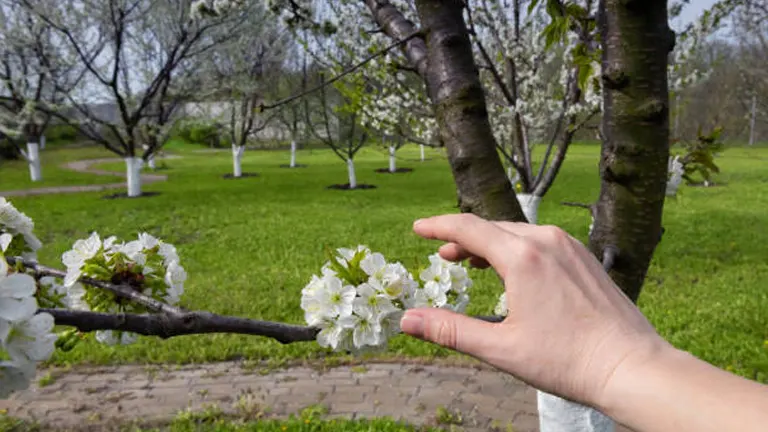
Cherry blossoms enter a period of dormancy in late autumn, during which metabolic activities slow down, and the tree conserves energy for the coming spring. As temperatures rise in late winter to early spring, the trees exit dormancy, triggering a surge in metabolic activity and nutrient demand. Fertilizing at the cusp of this transition ensures that nutrients are readily available for uptake.
Fertilization Timing and Tree Physiology
| Growth Stage | Ideal Fertilization Window | Nutrient Demand | Indicators of Need |
|---|---|---|---|
| Pre-Bloom | Late Fall to Early Spring | High | Bud formation, early leaf emergence |
| Post-Bloom | Immediately after blooming | Moderate | Leaf development, branch growth |
| Active Growth | Early Summer | Moderate to Low | Flower drop, canopy densification |
| Pre-Dormancy | Late Summer to Early Fall | Low | Color change in leaves, slow growth |
Indicators of Fertilization Need
- Bud Formation: Visible buds are a sign that the tree is preparing for spring growth, making it an optimal time for a pre-bloom fertilization.
- Lackluster Bloom: A diminished bloom compared to previous years can indicate nutrient deficiencies, underscoring the need for fertilization.
- Slowdown in Growth: Noticeably slower growth or less vigorous leaf production signals a possible need for nutrient replenishment.
Nutrient Absorption Rates and Soil Temperature
The absorption of nutrients by cherry blossom trees is influenced by soil temperature, with optimal uptake occurring when the soil is between 55°F to 65°F. This temperature range typically coincides with late fall and early spring in temperate climates, aligning with the recommended fertilization windows.
Unique Considerations for Fertilization:
- Nitrogen (N) Uptake: Essential for leaf and stem growth, with an optimal application rate of 1 to 2 pounds of actual nitrogen per 1000 square feet of root zone area.
- Phosphorus (P) and Potassium (K) Needs: Critical for root development and overall health, these nutrients should be balanced based on soil test recommendations, usually at a ratio reflecting the tree’s growth phase requirements.
By integrating these detailed considerations into your fertilization strategy, you provide your cherry blossoms with the precise nutrient support needed at each stage of their growth cycle. This scientific approach to fertilization not only enhances the health and beauty of the trees but also aligns with the natural rhythms of their biological processes, ensuring a spectacular bloom season.
Detailed Soil Preparation Techniques
Understanding Your Soil
Before planting or applying fertilizer to your cherry blossoms, a thorough understanding of your soil’s current condition is crucial. A soil test can reveal pH levels, nutrient deficiencies, and the presence of organic matter, guiding your preparation efforts.
Amending Your Soil
Based on the soil test results, amending your soil might be necessary to create the ideal growing environment for cherry blossoms. Here’s how:
- For Low pH (Acidic Soil): If your soil is too acidic, incorporating ground limestone can help raise the pH. Apply according to the test recommendations, usually in the fall, to allow time for the soil to adjust.
- For High pH (Alkaline Soil): For overly alkaline soils, elemental sulfur or aluminum sulfate can lower the pH to a more suitable level for cherry blossoms.
- Increasing Organic Matter: Incorporating well-rotted compost or aged manure into the soil can improve its structure, enhance nutrient content, and promote beneficial microbial activity. Spread a 2 to 4-inch layer of organic matter over the planting area and till it into the top 6 to 8 inches of soil.
Ensuring Proper Drainage
Cherry blossoms require well-drained soil to prevent root diseases. If drainage is an issue, consider raising the planting area by creating a raised bed or incorporating organic matter to improve soil structure and drainage.
Step-by-Step Guides on How to Fertilize Cherry Blossoms
Step 1: Understand Your Cherry Blossom’s Needs
- Identify the Variety: Knowing your cherry blossom variety can help determine specific nutrient needs and timing.
- Conduct a Soil Test: Before fertilizing, test your soil to understand its pH and nutrient levels. Cherry blossoms thrive in slightly acidic to neutral soil (pH 6.0-7.0) with balanced nutrients.
Step 2: Choose the Right Fertilizer
- Select a Balanced Fertilizer: Look for a fertilizer with a balanced NPK ratio (Nitrogen, Phosphorus, Potassium), such as 10-10-10, which suits general needs unless soil tests indicate otherwise.
- Consider Organic Options: Organic fertilizers release nutrients slowly, improving soil health over time. Options like bone meal (for Phosphorus) and blood meal (for Nitrogen) are beneficial.
Step 3: Timing Your Fertilization
- Best Time to Fertilize: The ideal times are in late fall or early spring. Fertilizing in late fall helps support root development over winter, while early spring fertilization boosts spring growth and blooming.
- Avoid Fertilizing in Late Spring and Summer: This can lead to excessive growth that isn’t sustainable by the plant and can weaken it before the winter.
Step 4: Applying the Fertilizer
- Measure the Fertilizer: Follow the instructions on the fertilizer package for the amount to use based on the size and age of your tree.
- Application Technique: Spread the fertilizer evenly under the tree’s canopy, starting a few inches from the base to avoid burning the trunk. Extend to the drip line, where the tree’s feeder roots are most active.
- Incorporate Into the Soil: Lightly rake the fertilizer into the top inch of soil to help it reach the roots more effectively.
- Water Thoroughly: After applying the fertilizer, water the area well to help dissolve the fertilizer and carry its nutrients down to the tree’s roots.
Step 5: Monitor and Maintain
- Observe Your Tree: After fertilizing, watch your cherry blossom for signs of improvement or any adverse reactions.
- Adjust as Needed: If you notice signs of nutrient burn (such as yellowing or burnt-looking leaves), reduce the amount of fertilizer and ensure you’re watering enough to dilute the concentration in the soil.
Step 6: Annual Review
- Re-test Soil Annually: Conditions change, and what worked one year might not be ideal the next. Annual soil tests can guide your fertilization plan.
- Record Keeping: Keeping a log of your fertilization schedule, types of fertilizers used, and the tree’s response can be invaluable for long-term care planning.
Additional Tips
- Mulching: Apply a layer of organic mulch around the base of your cherry blossom tree after fertilizing. This helps retain moisture, suppress weeds, and slowly adds nutrients back into the soil as it decomposes.
- Pruning: Combine your fertilization efforts with proper pruning techniques for the best results. Pruning should be done to remove dead or diseased branches and to shape the tree, usually in late winter while the tree is still dormant.
Expert Insights

Drawing upon the wisdom of seasoned horticulturists and arborists, we can adopt a suite of best practices tailored to enhance the health, aesthetics, and longevity of cherry blossom trees. These insights, grounded in scientific research and field experience, offer a nuanced approach to tree care that goes beyond basic maintenance.
Advanced Care Techniques from Horticultural Experts
- Soil Management: The health of cherry blossoms begins underground. Experts emphasize the importance of a balanced soil ecosystem, advocating for regular soil testing to monitor pH levels and nutrient content. Adjustments should be made based on these results to ensure the soil environment supports optimal tree health.
- Mulching Practices: A strategic layer of mulch does more than retain soil moisture and suppress weeds—it also regulates soil temperature and contributes to the microbial health of the soil. The right type and amount of mulch can significantly influence the well-being of cherry blossoms.
- Pruning Wisdom: Proper pruning is both an art and a science. Expert pruners recommend specific techniques and timings to not only shape the tree aesthetically but also to prevent diseases and promote more vigorous growth and blooming.
- Watering Insights: While cherry blossoms are relatively drought-tolerant once established, their watering needs vary significantly with the season and development stage. Experts provide guidelines on how to adjust watering schedules to meet these changing needs effectively.
Expert Recommendations for Cherry Blossom Care
| Expert Advice | Benefit | Scientific Basis |
|---|---|---|
| Balanced Soil Management | Ensures optimal nutrient availability and pH for growth. | Soil with a pH of 6.0-7.0 maximizes nutrient uptake. Nutrient ratios influence blossom vigor and color. |
| Strategic Mulching | Regulates soil temperature, retains moisture, adds organic matter. | Mulch can lower soil temperature by up to 10°F, reducing stress on roots during hot periods. |
| Pruning for Health and Aesthetics | Promotes air circulation, shapes the tree, encourages flowering. | Pruning during dormancy minimizes sap loss and risk of disease. |
| Seasonal Watering Adjustments | Matches tree’s water needs to its growth cycle and environmental conditions. | Adequate hydration during bud formation and blooming stages is critical for flower development. |
Unique Insights
- Mycorrhizal Symbiosis: Experts highlight the importance of fostering beneficial relationships between cherry blossom roots and mycorrhizal fungi, which enhance water and nutrient absorption, offering a natural boost to tree health.
- Disease Resistance Through Biodiversity: Introducing plant diversity around cherry blossoms can reduce pest pressure and disease incidence, as diverse ecosystems are more resilient and support beneficial predators.
- Data-Driven Fertilization: Utilizing soil test results to tailor fertilization practices ensures that trees receive precisely what they need, when they need it, minimizing waste and environmental impact.
By integrating these expert insights with a scientific understanding of cherry blossom care, gardeners can adopt a more informed and effective approach to nurturing their trees. This comprehensive care strategy, underpinned by scientific analysis and practical wisdom, ensures that cherry blossoms will thrive, bringing beauty and serenity to any landscape.
Seasonal Care Calendar for Cherry Blossoms
January-February: Winter Preparation and Pruning
- Soil Testing: Begin the year with a soil test to check for nutrient imbalances and pH levels. Amend the soil based on test results to create the ideal growing environment.
- Pruning: Prune cherry blossoms to remove any dead or diseased branches and to shape the tree. This is best done while the tree is dormant, minimizing stress and reducing the risk of disease transmission.
March-April: Spring Awakening
- Fertilization: As new growth appears, apply a balanced organic fertilizer to support vigorous growth and blooming. A formula with an NPK ratio of 5-10-5 is ideal for encouraging blossoms.
- Watering Increase: With the onset of warmer weather, increase watering to keep the soil consistently moist, preparing the tree for the energy-intensive blooming period.
May-June: Growth and Vigilance
- Pest and Disease Monitoring: Regularly inspect your cherry blossoms for signs of pests or diseases. Early detection and treatment are key to maintaining tree health.
- Consistent Watering: Continue to provide ample water, especially as temperatures rise, to support the tree’s growth and development through its active phase.
July-August: Midsummer Care
- Mulching: Apply a fresh layer of organic mulch around the base of the tree to retain moisture, regulate soil temperature, and suppress weeds.
- Watering Adjustment: Adjust your watering schedule based on rainfall and temperature to prevent over or under-watering. Deep, infrequent watering encourages strong root growth.
September-October: Autumn Nourishment
- Fertilization: Apply a low-nitrogen, high-phosphorus fertilizer to encourage strong root development before the onset of winter. This prepares the tree for next year’s growth and blooming.
- Pre-Winter Preparation: Begin reducing the amount of water as the tree starts to enter dormancy, minimizing the risk of frost damage to water-saturated roots.
November-December: Dormancy and Protection
- Dormancy Preparation: Reduce watering further as the tree fully enters dormancy. This is a period of rest and minimal growth, requiring less intervention.
- Frost Protection: For younger trees or those in particularly cold areas, consider providing frost protection with burlap wraps or mulch to insulate the root zone.
Unique Insights for Year-Round Care
- Soil Health Monitoring: Continuously monitor soil health beyond just the annual test, adjusting as necessary to maintain the ideal conditions for your cherry blossoms.
- Observation and Adjustment: The needs of your cherry blossom can vary significantly from year to year based on weather, growth, and soil conditions. Stay observant and be ready to adjust your care routine as necessary.
Incorporating these detailed guidelines and expert insights into your care routine will ensure your cherry blossoms not only survive but thrive, showcasing vibrant blooms that reflect the care and dedication you’ve invested.
Integration of Sustainable Practices
Utilizing Rainwater and Homemade Compost
- Rainwater Harvesting: Collecting rainwater in barrels or cisterns for irrigation is an eco-friendly way to water your cherry blossoms, conserving tap water and providing plants with soft, chemical-free water.
- Creating Homemade Compost: Turn kitchen scraps and yard waste into nutrient-rich compost. Applying homemade compost to your cherry blossom trees not only feeds them but also reduces waste and enhances soil life.
Watering Guidelines for Cherry Blossoms
Optimal Watering Practices
Cherry blossoms thrive with consistent moisture, especially during dry spells. Here are some guidelines:
- Amount of Water: Aim for about 1 to 2 inches of water per week, including rainfall. Use a rain gauge to monitor actual rainfall and adjust irrigation accordingly.
- Adjusting for Weather Conditions: Increase watering during hot, dry periods and reduce it during rainy spells to maintain consistent soil moisture.
- Deep Watering Technique: Instead of frequent shallow watering, opt for less frequent, deep watering. This encourages deeper root growth, enhancing drought resistance and overall tree health.
Advanced Techniques for Stunning Cherry Blossom Trees
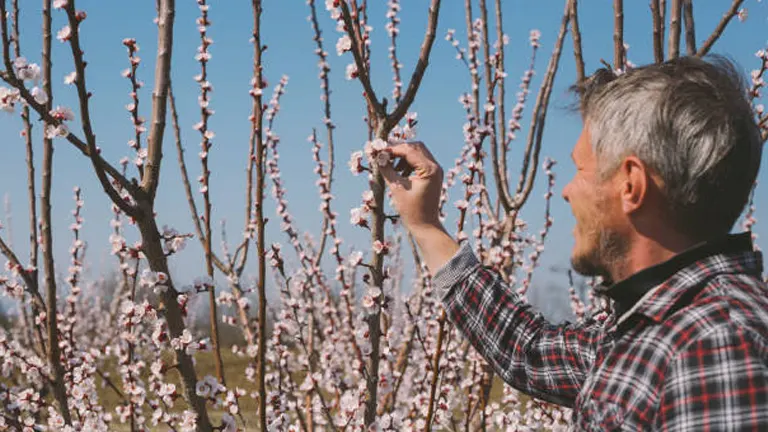
Incorporating Compost and Mulch for Added Nutrients
In addition to conventional fertilizers, enriching the soil with compost provides a wealth of organic matter, enhancing soil structure and fertility. Apply a layer of compost around the base of your cherry blossom trees in early spring to slowly release nutrients into the soil. Mulching with organic materials such as bark or straw can also conserve moisture, suppress weeds, and gradually improve soil health, creating an optimal growing environment for cherry blossoms.
Soil pH Adjustment for Optimal Cherry Blossom Health
Cherry blossoms prefer slightly acidic to neutral soil, with a pH range of 6.0 to 7.0. Conducting a soil test can reveal your soil’s pH level, allowing you to adjust it accordingly. If your soil is too alkaline, adding sulfur can help lower the pH, whereas lime can be used to raise the pH of overly acidic soils. Achieving the right pH balance is crucial for optimal nutrient uptake and vibrant bloom production.
Pruning Techniques
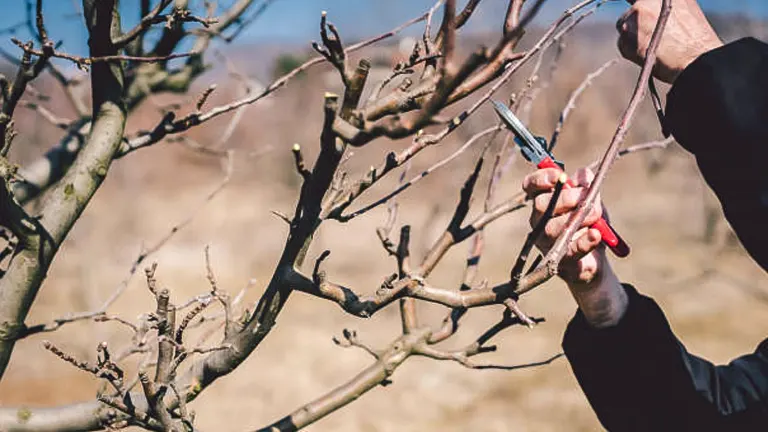
Pruning plays a vital role in the health and aesthetics of cherry blossom trees. The best time to prune is in late winter or early spring, before the new growth starts. This timing prevents sap loss and minimizes the risk of disease infection.
- Thinning Out: Remove any dead, diseased, or overcrowded branches to allow light and air to penetrate the canopy, enhancing the tree’s overall health and bloom potential.
- Shaping: Lightly shape the tree to maintain its natural form, removing any branches that disrupt the tree’s symmetry or balance.
- Heading Back: Trim back overly long branches to encourage bushier growth and more abundant blooms.
Plant-to-Plant and Row-to-Row Distance for Cherry Blossom Orchard
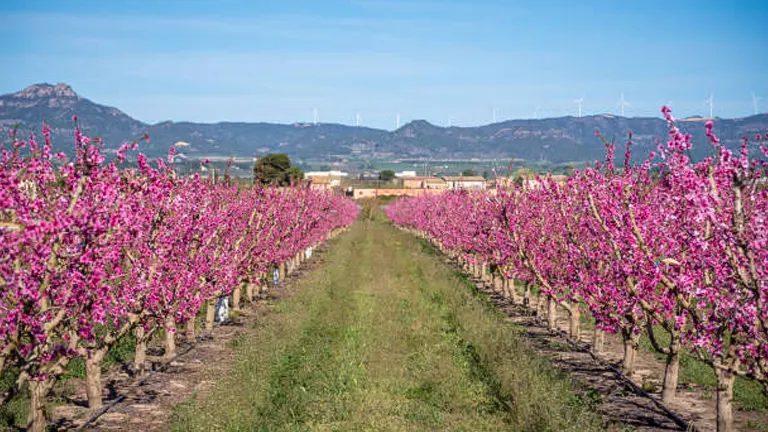
When planning a cherry blossom orchard, especially for medium or high-density farming, proper spacing is crucial to ensure each tree has enough room to grow and access to sunlight and air circulation.
- Medium Density Farming: Space trees approximately 15 to 20 feet apart, with rows 20 to 25 feet apart. This spacing allows for easier maintenance and harvesting while ensuring adequate growth space.
- High Density Farming: Utilize more intensive planting techniques, such as the use of dwarf rootstocks, spacing trees about 8 to 10 feet apart, with rows 12 to 15 feet apart. This approach requires more meticulous pruning and management but can increase yield per acre.
Adopting these advanced techniques and considerations into your care regimen will significantly enhance the health, aesthetics, and productivity of your cherry blossoms, ensuring they are not just surviving, but thriving, showcasing vibrant blooms that captivate all who behold them.
Troubleshooting Common Problems
- Yellowing Leaves: Often a sign of over-watering or poor drainage. Ensure your soil is well-draining and adjust watering practices. Yellow leaves can also indicate a nutrient imbalance; a soil test can help diagnose this.
- Lack of Blooms: This can result from insufficient light, improper pruning, or nutrient deficiencies, especially low phosphorus. Ensure trees receive full sun and consider a phosphorus-rich fertilizer if your soil test shows a deficiency.
- Weak or Stunted Growth: Check for root-bound conditions if trees are newly planted. For established trees, this could indicate compacted soil, poor nutrition, or root damage. Aerate the soil gently and consider root-friendly fertilizers.
Pest and Disease Management
- Aphids and Spider Mites: These pests can be managed with insecticidal soap or neem oil applications. Encouraging natural predators, like ladybugs, can also help control their populations.
- Cherry Blossom Blight: This fungal disease causes flowers and shoots to wither. Improve air circulation through pruning and remove affected parts promptly. Fungicides may be necessary in severe cases.
- Root Rot: Often a consequence of over-watering or poor drainage. Avoid planting in soggy areas and ensure good soil structure. If root rot is suspected, reducing watering and improving drainage may help, but severely affected trees may not recover.
The Benefits of Biodiversity in Cherry Blossom Care
- Attracting Pollinators: Cherry blossoms are pollinated by bees and other insects. Maintaining a diverse garden can attract these beneficial creatures, enhancing the health and productivity of your trees.
- Integrated Pest Management (IPM): Encouraging a variety of insects and birds can naturally control pest populations, reducing the need for chemical treatments. Planting native flowers and shrubs nearby can support this ecosystem balance.
- Soil Health: Diverse plantings can improve soil structure and fertility. Cover crops, like clover, fix nitrogen in the soil, while deep-rooted plants can help aerate the soil, benefiting your cherry blossoms.
Final Thoughts
Caring for cherry blossoms is a rewarding endeavor that blends aesthetic beauty with the joys of gardening. By understanding the detailed needs of these trees—from soil preparation and watering to managing pests and diseases—you can ensure they thrive. Embrace sustainable practices and biodiversity to support a healthy ecosystem around your cherry blossoms, contributing to their vigor and the stunning spectacle of their bloom.
FAQs
- What is the best time of year to fertilize cherry blossoms?
The optimal times to fertilize cherry blossoms are in late fall and early spring. Late fall fertilization supports root development during the dormant winter months, while early spring fertilization provides necessary nutrients for the upcoming growth spurt and blooming period. - Can I use the same fertilizer for my cherry blossoms that I use for other garden plants?
While cherry blossoms can benefit from general-purpose fertilizers, it’s essential to choose a fertilizer with an NPK ratio that supports flowering, such as a 5-10-5 formulation. This ensures a higher phosphorus content for root development and blooms, tailored to the specific needs of cherry blossoms. - How do I know if I’m over-fertilizing my cherry blossom trees?
Signs of over-fertilization include salt buildup on the soil surface, yellowing or burnt-looking leaves, and poor blooming. If you notice these symptoms, reduce the amount of fertilizer and increase watering to help flush excess nutrients from the soil. - Is it necessary to fertilize young cherry blossom trees?
Yes, young cherry blossom trees benefit from fertilization as they establish. However, it’s crucial to use a lighter hand with fertilizers for young trees to prevent over-fertilization. A balanced, slow-release fertilizer applied according to the product’s guidelines for young trees can promote healthy growth. - How does soil pH affect fertilizing cherry blossoms?
Soil pH significantly influences nutrient availability. Cherry blossoms prefer slightly acidic to neutral soil (pH 6.0-7.0). If your soil is too acidic or alkaline, nutrient uptake can be impaired. Adjusting the soil pH to this range before fertilizing ensures that your cherry blossoms can effectively absorb the applied nutrients. - Can organic mulches replace the need for fertilizer in cherry blossoms?
Organic mulches like compost can enrich the soil and slowly release nutrients as they decompose, potentially reducing the need for additional fertilizers. However, for optimal blooming and growth, supplementing with a targeted fertilizer, especially in nutrient-deficient soils, is recommended to meet the specific needs of cherry blossoms. - How should I apply fertilizer to my cherry blossom tree?
Spread the fertilizer evenly under the canopy, avoiding direct contact with the trunk to prevent burn. Extend out to the drip line, where the tree’s active feeder roots are located. Gently rake the fertilizer into the soil and water thoroughly to help distribute the nutrients to the roots. - What role does watering play after fertilizing cherry blossoms?
Watering is crucial after fertilizing as it helps dissolve the fertilizer, allowing the nutrients to seep into the soil and reach the tree’s roots. Ensure adequate watering following application to prevent nutrient burn and to facilitate optimal nutrient uptake by the tree.
Embracing the art of fertilizing cherry blossoms not only nurtures their stunning blooms but also deepens our connection with the natural world. With each season, let the vibrant display of your cherry blossoms be a testament to thoughtful care and the joy of gardening.

Benjamin Brooks
Forestry AuthorGreetings! I'm Benjamin Brooks, and my journey over the past 15 years has revolved around the fascinating realms of content creation, expertise in snow clearing, and the intricate world of lumberjacking and landscaping. What began as a simple curiosity about the natural world and heavy machinery has evolved into a passionate profession where my love for crafting words intertwines seamlessly with my lumberjacking and garden skills.

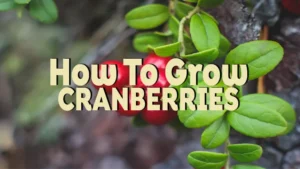

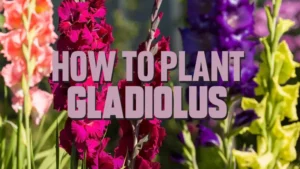









Leave your comment